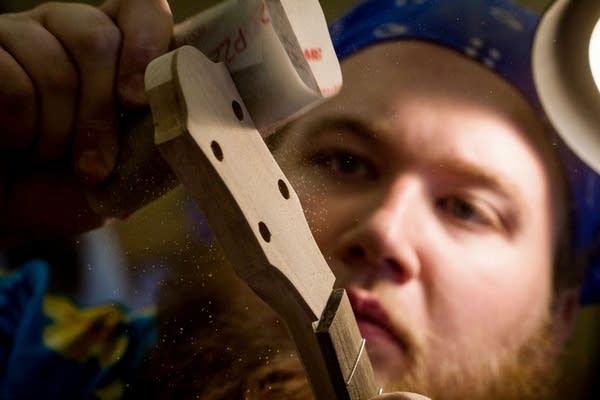School of Rock: Red Wing guitar builders hit the right notes

Nash Smith used sandpaper to contour the edges of his ukelele Thursday, April 30, at Minnesota State College -- Southeast Technical in Red Wing.
Alex Kolyer for MPR News
Go Deeper.
Create an account or log in to save stories.
Like this?
Thanks for liking this story! We have added it to a list of your favorite stories.


